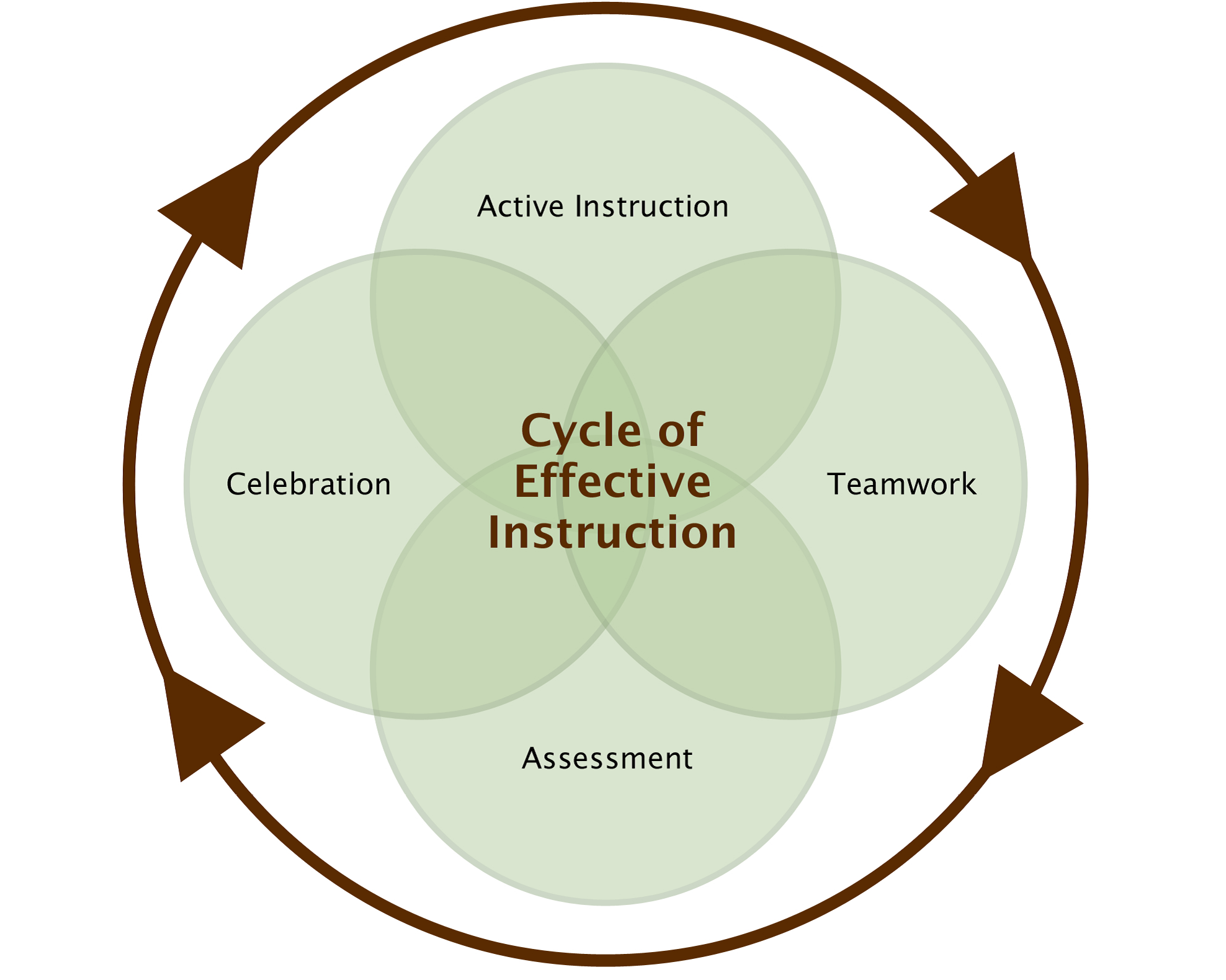Ten Effective Research-Based Strategies
In addition to the instructional design strategies, Dr. Robert Marzano (2000) recognized ten, research-based instructional strategies that are necessary for cross-curricular alignment and cross-grade level instruction. These strategies coincide with the Cycle of Effective Instruction. The Cycle of Effective Instruction outlines the vital components of the teaching and learning process. In addition, this concept also has a heavy impact on how active instruction, teamwork, assessment, and celebration are placed and employed within every curriculum. Marzano’s strategies include:
- Vocabulary
- Comparing, contrasting, classifying, analogies, and metaphors
- Summarizing and note-taking
- Reinforcing and giving raise
- Homework and practice
- Nonlinguistic representation
- Cooperative Learning
- Setting Objectives and providing feedback
- Generating and testing hypotheses
- Cues, questions, and advanced organizers

As the curriculum design process unfolds and progresses, educators must consider how the Big Ideas and Essential Questions can be reinforced through the implementation of these strategies. In addition, these two elements allow learning to be contextualized within the scope and sequence of a curriculum as it is presented through real, authentic learning experiences. Wiggins and McTighe (2008) speak of the challenges that many high schools face when the Big Ideas and Essential Questions are not a living component within curriculum and are not communicated to students. They report:
Student displays of boredom, passivity, and apathy; external test pressures that demand superficial content coverage; and students who seem to know the material but don’t know how to apply it. These different problems are, in fact, interrelated. They can be traced to one underlying factor-the lack of clarity about the goals of a high school education and how those goals should inform instruction, assessment, and curriculum design” (Put Understanding First, 36-41).
Well-designed curriculums that embed best instructional practices that are aligned to the Big Ideas and Essential Questions have the ability to modify school culture and paint a vivid picture of the academic goals that must be met. As a result, this will allow a greater sense of clarity and encourage communication among educators, students, and parents. Eventually, this will generate a greater sense of clarity and encourage communication among educators, students, and parents about academic expectations.

